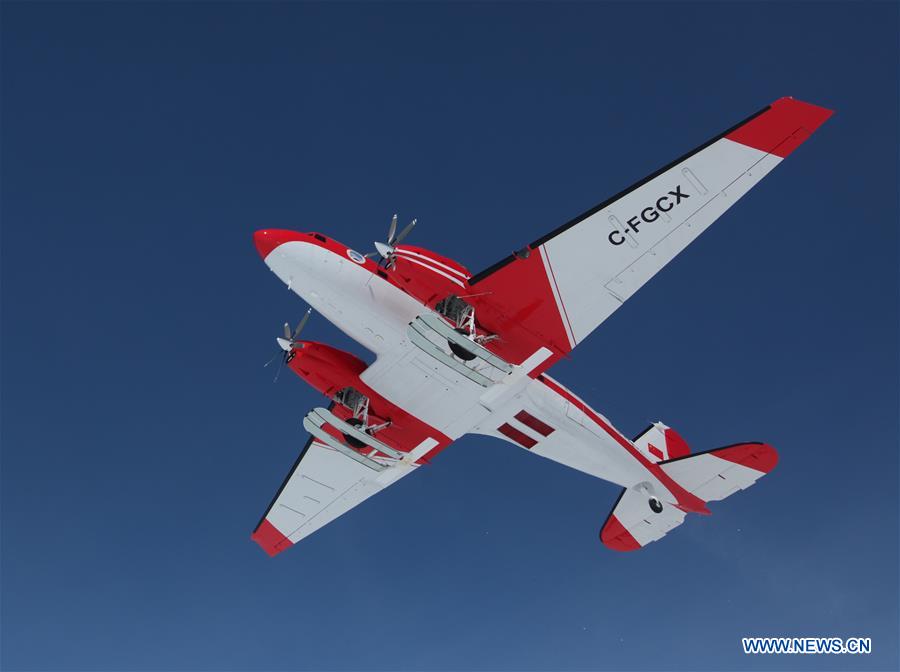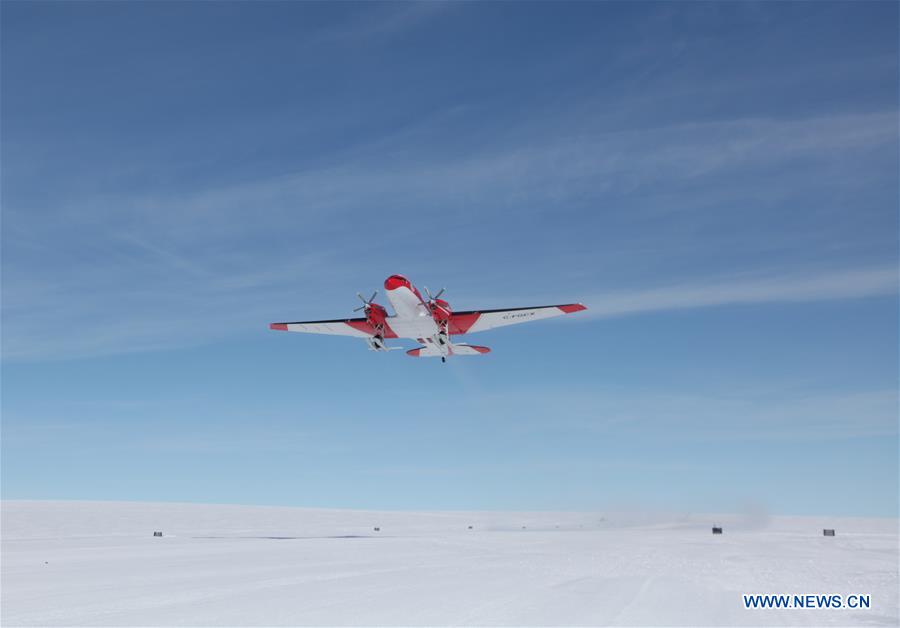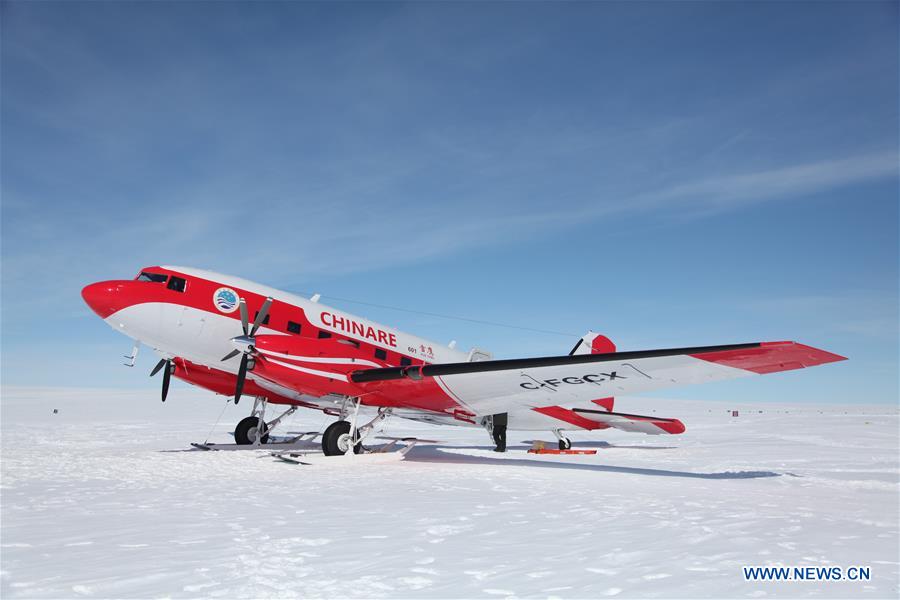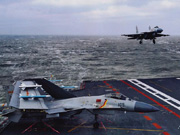


Photo taken on Dec 7, 2015 shows China's first polar airplane "Snow Eagle 601" having a trial flight at the Zhongshan Station, a Chinese scientific research base in Antarctica. [Photo/Xinhua]
China's first fixed-wing aircraft for polar flight, Snow Eagle 601, has fulfilled its first mission in the Antarctic as part of China’s 32nd scientific expedition to Antarctica. This is an important milestone, as China will soon establish its first Antarctic aviation team and build a land-sea-air observation platform in the region.
After this success, China plans to develop a fleet of such fixed-wing aircraft, said Sun Bo, Deputy Director of the Polar Research Institute of China.
Among other accomplishments, the Snow Eagle 601 conducted airborne remote sensing and transport tasks during its mission. It made 47 flights exceeding 264 hours and nearly 80,000 kilometers. For the first time, the aircraft practiced taking off and landing on a frozen runway without ground support at Taishan Station. It also completed a long-distance flight to Kunlun Station at 4,087 meters above sea level.
In addition, the new aircraft helped the expedition team to confirm speculation about the South Pole being home to the world's largest canyon, and discovered a number of subglacial lakes and currents connected to the canyon, forming a giant "wetland" beneath the Antarctic ice.
It also assisted in a humanitarian mission with the Australian Antarctic Division to transport the remains of an Australian pilot.

Photo taken on Dec 7, 2015 shows China's first polar airplane "Snow Eagle 601" having a trial flight at the Zhongshan Station, a Chinese scientific research base in Antarctica. [Photo/Xinhua]

Photo taken on Dec 7, 2015 shows China's first polar airplane "Snow Eagle 601" having a trial flight at the Zhongshan Station, a Chinese scientific research base in Antarctica. [Photo/Xinhua]
Day|Week

 Female official wearing traditional Han costume to promote local tourism
Female official wearing traditional Han costume to promote local tourism Over 12,000 Runners Seek Medical Care in S China’s Marathon
Over 12,000 Runners Seek Medical Care in S China’s Marathon Six Luxury Sports Cars Totaled after Fail Attempts to Cross China’s Most Perilous Highway Linking SW China’s Sichuan and Tibet
Six Luxury Sports Cars Totaled after Fail Attempts to Cross China’s Most Perilous Highway Linking SW China’s Sichuan and Tibet Incredible Transformation: “Witch Child”Whose Parents Left Him for Dead in Nigerian Makes Speedy Recovery
Incredible Transformation: “Witch Child”Whose Parents Left Him for Dead in Nigerian Makes Speedy Recovery Kenyan woman's crappy photoshopped pictures make her a web celebrity
Kenyan woman's crappy photoshopped pictures make her a web celebrity Magnificent view of E. China's Anhui province
Magnificent view of E. China's Anhui province Global landmarks captured in striking shots
Global landmarks captured in striking shots Thailand Elephants Disguised as Pandas Sparks Debates
Thailand Elephants Disguised as Pandas Sparks Debates College girl dresses as mermaid to mark World Water Day
College girl dresses as mermaid to mark World Water Day J-15 fighters in drill on Chinese aircraft carrier
J-15 fighters in drill on Chinese aircraft carrier